How to evaluate different yeast products?
Published: September 23, 2021
By: Juhani Vuorenmaa, R&D Director
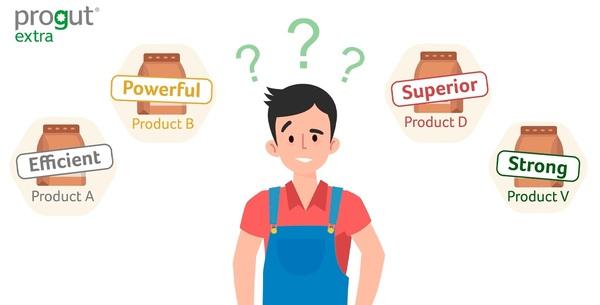
Yeast products certainly have a role in supporting the performance and gut health of animals but choosing the right one can be tricky as there are plenty of products with similar claims. The yeast product manufacturers naturally emphasize those characteristics in their marketing messages that can differentiate them from the competition.
The important characteristics of different yeast types vary and unfortunately, the messages sometimes contain disinformation. The following text tries to shed light to this tangle and to explain certain key characteristics of yeast products. It also positions Hankkija’s Progut® amongst the yeasts.
Yeast source and type
The yeast products for animal feeding can be sourced from primary fermentation in which the yeast is grown for the feeding purpose. Those can also be sourced from secondary fermentation of brewing or bioethanol production according to circular economy principles. Depending on the yeast type both sources can be appropriate. When aiming at probiotic effects, a yeast from primary fermentation is a must and the specific yeast strain and concentration (CFU/g) are important features. The same does not apply for inactivated yeast products, such as hydrolyzed yeasts in which the amount of cell wall material and its structures are important. The yeast from brewing or bioethanol production contains older cells than yeast from primary fermentation (more cells in the stationary phase). When cells enter the stationary phase they become thicker and the level of mannosyl phosphorylation of cell wall proteins increases (Klis et al. 2002). Thus brewery and bioethanol yeasts have higher cell wall content and are more suitable for the production of yeast hydrolysates.
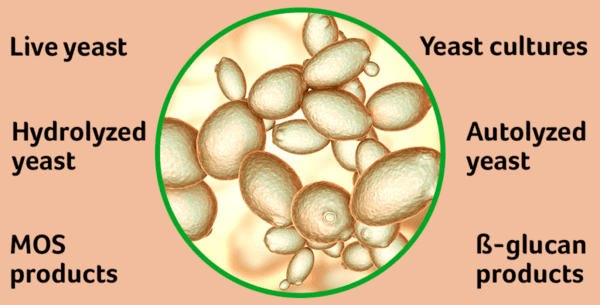
The quality and efficacy of hydrolyzed yeast can also vary depending on purity of the raw material, method of hydrolysis and the fractions of the hydrolysate that are utilized in the end product. The purity of the yeast can be increased by filtration or centrifugation. Yeasts hydrolysis with acids or enzymes results in more controlled process and homogenous end product than autolysis. The controlled hydrolysis by acids or enzymes breaks down mainly the outer mannoprotein layer of the cell wall. After hydrolysis a major part of the manno-oligosaccharides, being water soluble by nature, remain in the extract fraction.
This extract fraction is removed from the so-called cell wall or manno-oligosaccharide (MOS) products, which then have a relatively high mannose and beta-glucan content (in polysaccharide form) but a very low oligosaccharide content. Unfortunately, total mannose or beta-glucan (glucose) content of a yeast product does not give any information on the functional structures of these carbohydrates, such as MOS, and thus does not correlate with the efficacy of the products.
Progut® is produced from filtrated brewer’s (or bioethanol) yeast and has a high yeast concentration. It is hydrolyzed with an optimized acid hydrolysis and contains both the extract fraction rich in soluble oligosaccharides and the cell wall fraction. The process effectively opens and releases the functional, manno-oligosaccharides and increases the exposure of all the cell wall components (including beta-glucan) to bacteria and immune cell receptors in the intestine. This also explains the efficacy of the product in stimulating rumen fermentation.
The amount of the functional carbohydrate structures can be measured for example by Gel Permeation Chromatography (GPC) and Nuclear Magnetic Resonance (NMR) spectroscopy.
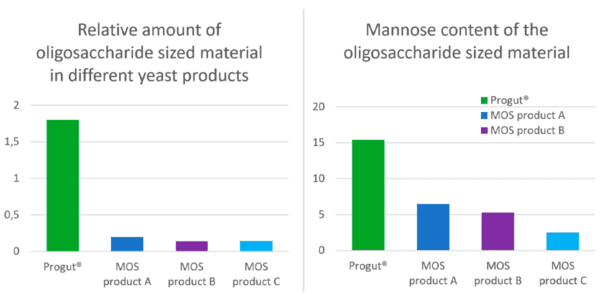
Figure 1. The relative amount of oligosaccharide sized material and its mannose content in different yeast products, Glykos Ltd
The GPC analysis by Glykos Ltd. showed that Progut® contains 5–10 times more soluble oligosaccharide sized material than competitive yeast cell wall (MOS) products (figure 1). The amount of these carbohydrate structures have been shown to correlate with the bacterial binding and immune modulating properties of yeasts.
Although the tested MOS products contained more total mannose than Progut® their manno-oligosaccharide content was lower as shown in figure 1. The NMR spectrum analysis revealed that Progut® also contained higher amount of terminal Manα1-3 units (blue marks in figure 2) than the tested MOS products. Manα1-3 is a preferred binding site for many E. coli strains.
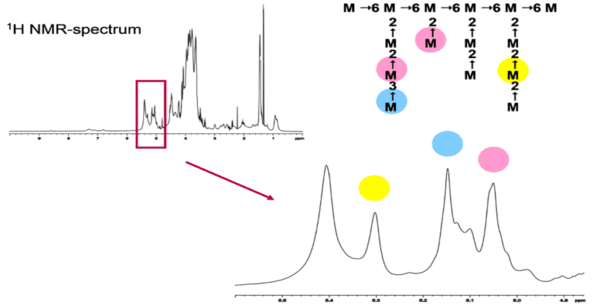
Figure 2. 1H NMR of soluble poly- and oligosaccharides from Progut®. Some examples of structural features of manno-oligosaccharides are indicated from the NMR-spectrum, Glykos Ltd
Due to the above mentioned reasons Progut® has shown to prevent effectively the adherence of E. coli and Salmonella to intestinal mucus in comparison to different live yeast, cell wall and yeast culture products.
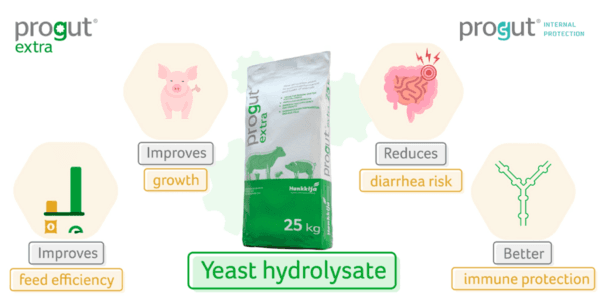
For the same reasons it has also shown to be a powerful immune modulator and enhancer of rumen fermentation and thus improved the performance and well-being of animals.
Progut®, the original post-biotic
As described in a blog by Hannele Kettunen, Progut® complies to the definition of a postbiotic, the most recent concept added to the “-biotics” family. Postbiotics are defined as bioactive compounds produced by and from food-grade microbial organisms. Progut® is produced from a food-grade yeast by acid hydrolysis which degrades its cell wall into bioactive fragments of optimal size.

Live yeast products are often marketed for their probiotic effects and yeast cell wall products for their prebiotic effects. Both of these approaches are dependent on interactions with live microbes which can be seen as a clear drawback. The intestinal microbiota consists of hundreds of microbial species and is, especially in young animals in constant change. In this kind of environment the colonization resistance will limit the ability of a single strain probiotic, such as live yeast, to establish a permanent position in gut. The potential of prebiotic yeasts to favorably modulate intestinal microbiota is also limited and unpredictable due to the variation of the composition of microbiota. Progut® consists of bioactive molecular structures and its effect on animal performance is independent of luminal microbial interactions and microbial composition.
Klis et al., 2002. Dynamics of cell wall structure in Saccharomyces cerevisiae. Microbiology Reviews 26 (2002) 239-256
Related topics
Authors:
Hankkija
Recommend
Comment
Share

Would you like to discuss another topic? Create a new post to engage with experts in the community.








.jpg&w=3840&q=75)